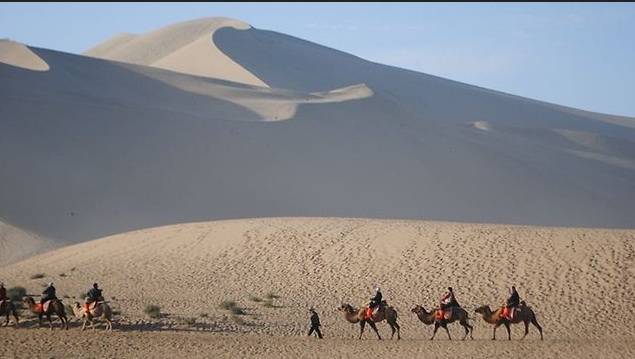Angela Stanzel writes: Since 2013, China has been hyping its New Silk Road project. It launched a massive public relations campaign – which even held out the prospect of “Silk Road Tourism” – to turn the idea of a global transportation network into an incentive to cooperate with China and an expression of an Asian “community of destiny”. But China will face huge challenges in making the New Silk Road a reality. One of the places where China had begun re-construction of ancient Silk Road links early on is Pakistan. But after decades, progress has been limited. Despite China’s commitment to the Silk Road project, it’s not clear that it is going anywhere.
The “Belt and Road” initiative” includes two elements, a Silk Road Economic Belt and the 21st Century Maritime Silk Road; the aim is to create a northern road corridor and a southern maritime corridor to connect China with Europe. Beginning with Jiang Zemin in 1996, the Silk Road narrative has been long used by Chinese leaders to increase China’s – mainly economic – cooperation with other countries in Central Asia, South Asia and the Middle East, Africa – and in Europe. Since 2013, the new Chinese leadership under Xi Jinping has developed this narrative that integrates existing projects in two mega “Belt and Road” initiatives.
The Silk Road initiative has also given a new impetus to China’s infrastructure development in Pakistan. China’s construction of the Karakoram Highway/Road from China to Pakistan dates back to the beginning of the 1970s – long before the “Silk Road” hype of the last few months. China has financed and developed the Gwadar port on the Arabian Sea since the 1990s. Since 2013, China and Pakistan have been planning a China-Pakistan Economic Corridor, which connects Gwadar with China’s western Xinjiang region. According to Chinese president Xi Jinping, the Economic Corridor is “a major project of the ‘Belt and Road’ initiative” How Does the Silk Road Wind

